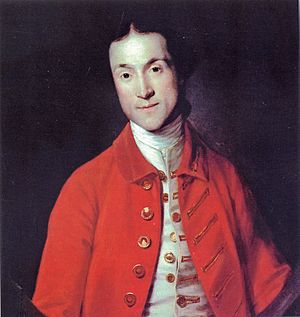Rhadamanthus (horse) facts for kids
Quick facts for kids Rhadamanthus |
|
|---|---|
| Sire | Justice |
| Grandsire | Herod |
| Dam | Flyer |
| Damsire | Sweetbriar |
| Sex | Stallion |
| Foaled | 1787 |
| Country | Kingdom of Great Britain |
| Colour | Bay or Brown |
| Breeder | Lord Grosvenor |
| Owner | 1) Lord Grosvenor 2) William Frisby |
| Trainer | J. Pratt |
| Record | 9:5-2-0 |
| Major wins | |
| Prince's Stakes (1790) Epsom Derby (1790) |
|
Rhadamanthus (born in 1787) was a famous British Thoroughbred racehorse. In his racing career, which lasted from 1790 to 1793, he ran in nine races and won five of them.
In 1790, he became one of the best young horses in Great Britain by winning the famous Epsom Derby. After his racing days were over, he became a sire, which means he was a father to other horses.
Contents
Family and Background
Rhadamanthus was a bay or brown horse bred by his owner, Lord Grosvenor. His mother was a mare named Flyer. Flyer later had another famous son, Daedalus, who also won the Derby in 1794. This made them a very successful family of racehorses.
The father of Rhadamanthus was a horse named Justice, who had also been a successful racehorse for Lord Grosvenor.
Racing Career
A Champion's First Year: 1790
Rhadamanthus first appeared on a racetrack on April 25, 1790, at the Newmarket racecourse. He was the favorite to win and did not disappoint, beating two other horses in the Prince's Stakes.
His next big race was the Epsom Derby on May 22. Lord Grosvenor had two strong horses in the race: Rhadamanthus and another horse named Asparagus. Rhadamanthus was the favorite to win. Ridden by jockey John Arnull, Rhadamanthus won the race, beating his stablemate Asparagus.
After a break of almost five months, Rhadamanthus returned to racing in the fall. On October 19, he easily won a sweepstakes race at Newmarket. However, his winning streak ended on November 1, when he came in second place to his stablemate, Asparagus.
Later Racing Years: 1791–1793
In 1791, Rhadamanthus raced only once. At Newmarket's July meeting, he won a sweepstakes race, earning a large prize of 1,350 guineas for his owner.
In 1792, as a five-year-old, Rhadamanthus ran in the Oatlands Stakes. This was a very valuable race with a prize of 5,375 guineas. Even though he was the favorite, he did not place among the winners. Later that year, he won a race by walking over, which means all the other horses dropped out, so he won automatically.
Rhadamanthus raced for the last time on April 30, 1793. In a one-on-one match race, he was beaten by a horse named Buzzard.
Life After Racing
After his racing career, Rhadamanthus was sold to a man named William Frisby. He became a stud horse, meaning he was bred with female horses to produce foals. He was available for breeding in several towns in Northamptonshire, England.
Interestingly, the official record book for horses, the General Stud Book, does not list any foals for this Rhadamanthus. The foals listed under that name belong to a different, younger horse who was also named Rhadamanthus.
Pedigree
| Sire Justice (GB) 1774 |
Herod 1758 |
Tartar | Partner |
|---|---|---|---|
| Meteora | |||
| Cypron | Blaze | ||
| Salome | |||
| Curiosity 1760 |
Snap | Snip | |
| sister to Slipby | |||
| Regulus mare | Regulus | ||
| Childers mare | |||
| Dam Flyer (GB) 1777 |
Sweetbriar 1769 |
Syphon | Squirt |
| Patriot mare | |||
| Shakespeare mare | Shakespeare | ||
| Miss Meredith | |||
| Squirrel mare 1767 |
Squirrel | Traveller | |
| Grey Bloody ... | |||
| Blank mare | Blank | ||
| Regulus mare (Family:1-a) |


